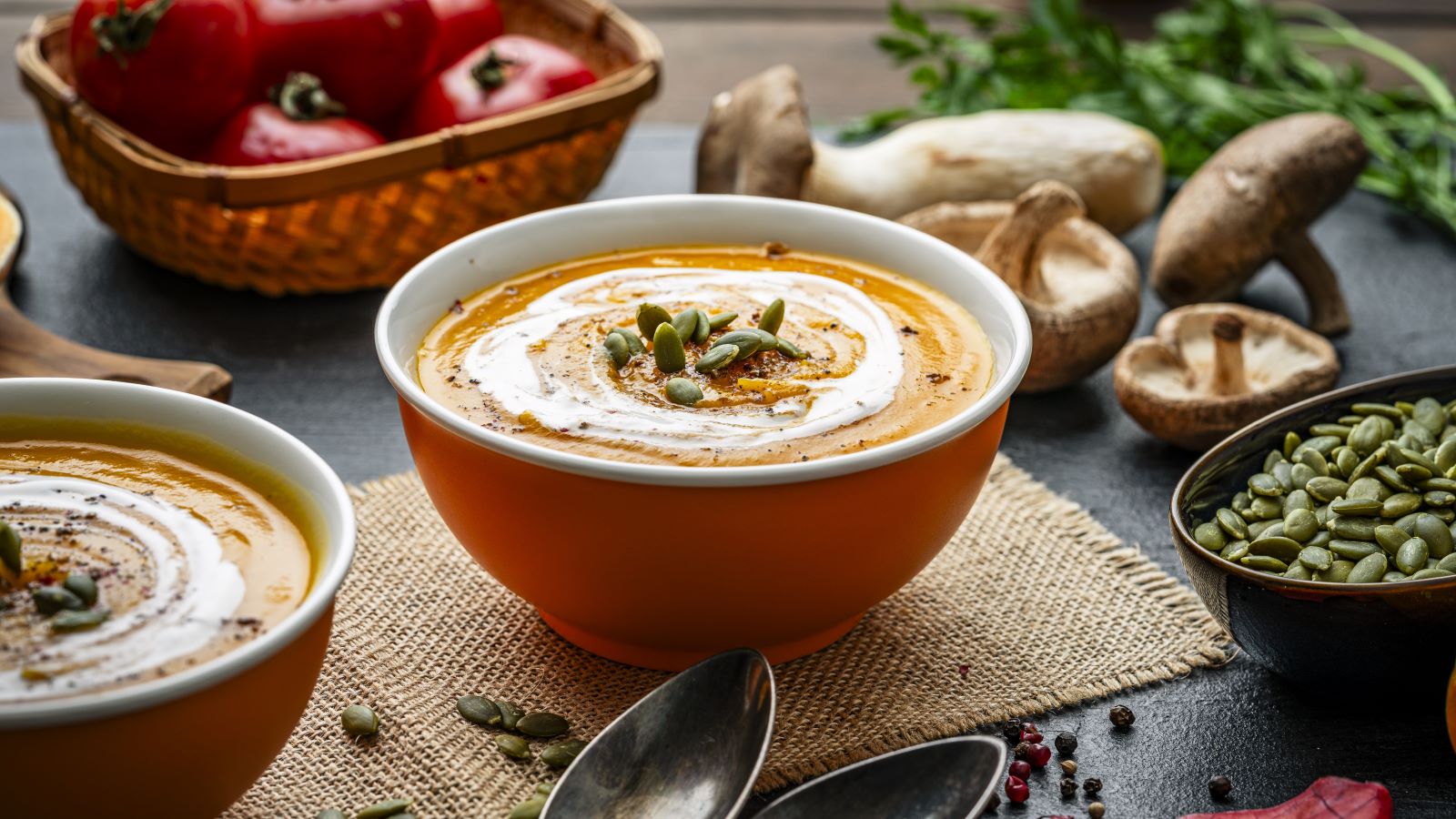<< Back
7 Easy Swaps to Make Any Soup a Little Healthier

October 08, 2025
A steaming bowl of soup can feel like a hug on a cold day. But depending on what’s in it, that cozy comfort food might be fueling your body — or sneaking in extra salt, fat and calories.
The fix? A few smart swaps.
“Small changes can make a big difference,” says Ulysses Wu, MD, with Hartford HealthCare. “You don’t have to sacrifice taste — in fact, many of these healthy swaps make soups even more delicious.”
Here are seven easy ways to give your favorite soups a healthy boost.
1. Choose broth over cream.
Cream-based soups like chowders or bisques are rich and delicious, but they’re also high in saturated fat.
“Broth-based soups are lighter, lower in calories and still deliver plenty of flavor,” says Dr. Wu. “If you want a creamy texture, consider some lower fat cream or milk options. Or even better, try pureeing some vegetables instead.”
Blended favorites like butternut squash or tomato soup offer silky textures without the heavy cream. Or, with broth-based soups, try using a hand blender right in the pot to add some instant creaminess
> Related: 3 Reasons to Eat More Bone Broth
2. Go heavy on the veggies.
Soup is one of the easiest ways to sneak more vegetables into your diet. Carrots, celery, spinach, kale, zucchini, peppers — they all make great additions.
“The more vegetables you add, the more fiber, vitamins and minerals you’re getting,” notes Dr. Wu. “Plus, they make the soup more filling.”
If chopping vegetables isn’t your thing, try keeping a few bags of frozen vegetables on hand. They can go straight from the freezer to the pot and save you prep time.
> Related: The 8 Best Vegetables for Your Health
3. Swap white pasta or rice for whole grains.
That handful of noodles or scoop of white rice adds bulk — but not much nutrition.
“Whole grains like brown rice, quinoa, barley or whole wheat pasta give you more fiber and a steadier source of energy,” says Dr. Wu.
If you’re new to whole grains, start small. Try half white and half whole grains in your soup so you can adjust to the flavor and texture.
> Related: Healthier Soup Series: Broccoli Cheddar
4. Pick lean proteins.
Skip fatty cuts of beef or sausage and opt for chicken, turkey, seafood or plant-based proteins instead.
“Lean proteins keep the soup satisfying without adding saturated fat,” Dr. Wu says. “Legumes like lentils and beans are great options, too — they give you protein and fiber at the same time.”
For a simple upgrade, swap ground beef for ground turkey in chili or add canned beans to chicken soup for easy health benefits.
> Related: 7 Protein-Packed Foods to Add to Your Diet
5. Cut back on the salt.
Store-bought broth and seasoning packets are often loaded with sodium.
“Too much salt raises blood pressure and increases heart risk,” says Dr. Wu. “Instead, try seasoning with fresh herbs, spices, garlic, onion or even a splash of lemon juice or vinegar.”
When using packaged broth, choose “low-sodium” or “no salt added” versions. Then taste as you go — you’ll be surprised how much flavor you can add without reaching for the salt shaker.
> Related: 5 Tips for a Healthy Fall Season
6. Choose smart toppings.
Cheese, sour cream and croutons pile on calories fast.
“Instead, top your soup with fresh herbs, avocado slices or plain Greek yogurt,” suggests Dr. Wu. “The air fryer can also work magic with texture, if you choose certain vegetables like chickpeas.”
If you crave crunch, try toasted seeds or nuts — a sprinkle of pumpkin seeds or almonds adds texture and healthy fats without going overboard.
7. Watch your portions.
Even the healthiest soup can become too much of a good thing if you eat giant bowls.
“Think of soup as part of the meal,” says Dr. Wu. “Pair a moderate serving with a salad or a slice of whole grain bread instead of filling up on endless refills.”
If you’re struggling with portion control, try using smaller bowls and let your soup rest before going back for more. Giving your body time to register fullness can help you stop at satisfied.
> Related: Can Chicken Noodle Soup Really Cure My Cold?
Small changes make a big impact.
Soups can be very healthy — if you build it right.
“With just a few swaps, you can turn almost any soup into a nutrient-dense dish that supports your health,” says Dr. Wu. “It’s about being mindful of ingredients, not giving up the foods you love.”